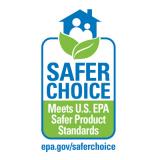Other Service-Enabled Data
- Home
- Multisystem Search
- Topic Searches
- System Data Searches
- About the Data
- Data Downloads
- Widgets
- Services
- Mobile
- Other Datasets
Envirofacts contains a variety of environmental information from EPA System databases, as well as other EPA data sources. All of these data are important and critical in decision-making, however some of the data sources may not be easily accessible, and for this reason, these data are grouped on this page for easy access through the Envirofacts RESTful API. Below you will find a listing of program data available for download or incorporation into a mashup. Visit the Envirofacts RESTful API page for additional information on how to utilize the functionality available within the API.
myRTK is an EPA website designed for mobile devices. For any address, the map displays nearby facilities regulated under federal environmental laws. Facility reports provide summaries of chemical/pollutant releases, chemical effects, and compliance history from numerous data systems.
ECHO focuses on facility compliance and EPA/state enforcement of environmental regulations. ECHO provides integrated compliance and enforcement information for approximately 800,000 regulated facilities nationwide. The site allows users to find inspection, violation, enforcement action, informal enforcement action, and penalty information about facilities for the past three years. Facilities regulated under the following environmental statutes are included: Clean Air Act (CAA) Stationary Source Program, Clean Water Act (CWA) National Pollutant Elimination Discharge System (NPDES), Resource Conservation and Recovery Act (RCRA), and Safe Drinking Water Act (SDWA). The information shown in ECHO accesses an integrated database called IDEA, which stands for Integrated Data for Enforcement Analysis. Some users prefer to use the raw IDEA data rather than using the ECHO web interface. The ECHO Exporter and IDEA data downloads provide a full set of information nationally, whereas ECHO has limitations on how much data can be shown at one time.
REST API Service for Integrated Compliance Information System (ICIS)
Concentrated Animal Feeding Operations (CAFOs) are agricultural operations where animals are kept and raised in confined situations. Manure and wastewater from CAFOs have the potential to contribute pollutants such as nitrogen and phosphorus, organic matter, sediment, pathogens, heavy metals, hormones, antibiotics, and ammonia to the environment. Animal waste can enter water bodies from spills or breaks of waste storage structures, due to accidents or excessive rain, and non-agricultural application of manure to crop land. The NPDES program regulates the discharge of pollutants from CAFOs to waters of the United States.
Products that qualify for the Safer Choice label contain ingredients that are safer for workers, families, pets, and the environment -- EPA scientists review every ingredient for potential health and environmental concerns. Safer Choice-labeled products must also meet performance, packaging, and ingredient disclosure requirements.
View More... REST API Service for Safe Drinking Water Information System (SDWIS)
REST API Service for Safe Drinking Water Information System (SDWIS)
National Primary Drinking Water Regulations (NPDWRs), or primary standards, are legally enforceable standards that apply to public water systems. Primary standards protect public health by limiting the levels of certain contaminants in drinking water. EPA sets a Maximum Contamination Limit (MCL) for every regulated contaminant. When public water systems are found to contain contaminants in amounts exceeding the MCL, they are in violation and must take action to restore the quality of their water. For more information about EPA regulated drinking water contaminants visit https://water.epa.gov/drink/contaminants/#List View More...




